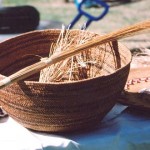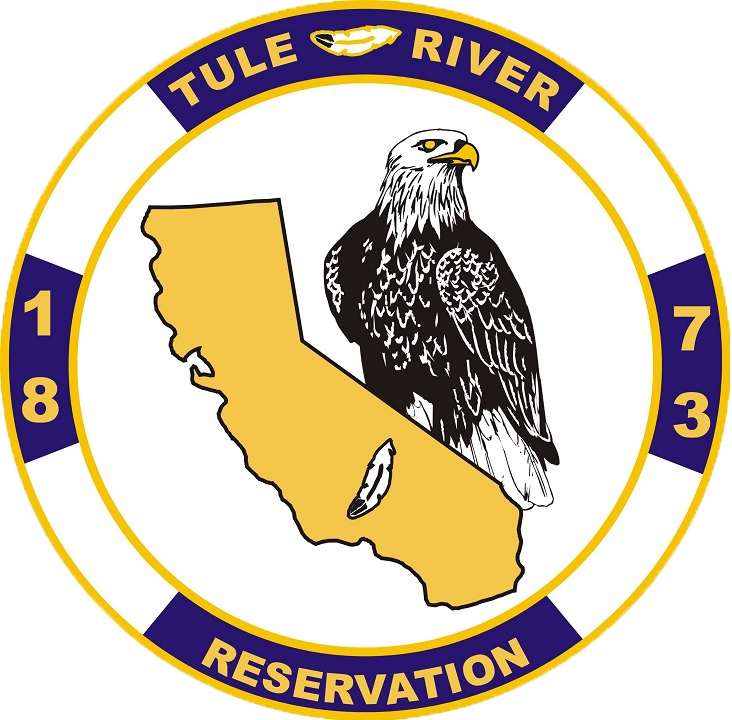The ravages of disease were compounded by injustice and starvation. In 1860 the Indian population in California was only 20% of what it had been ten years earlier.
All information in these History pages was provided by Gelya Frank.
Tule River Culture
Stories & Legends
Many of the Stories told by the Elders of the Tule River Indian reservation have been handed down from generation to generation. Almost all of these stories reflect the ways and life of the Tule River Tribes. All of the stories however, carry a strong message to the youth and adults in the region. Significant historical facts on these stories come from Painted Rock. This is a formation located next to the Tule River, on the Reservation. Painted Rock Coyote and the Moon Coyote and the Sun Big Foot – The Hairy Man Soda Springs
Arts & Crafts
 In the old days, basket weaving was not only a common practice but a necessity of every day life. Baskets were used for cooking, gathering and storage. “Baskets were the early Tupperware,” says Basket Weaver and Tule River Tribal Member Nicola Larsen. Baskets are made of various materials available on the reservation, such as pine needle, willow, sour berry, etc. Today, Basket weaving is a revived skill that is practiced amongst various Tule River Tribal members.
In the old days, basket weaving was not only a common practice but a necessity of every day life. Baskets were used for cooking, gathering and storage. “Baskets were the early Tupperware,” says Basket Weaver and Tule River Tribal Member Nicola Larsen. Baskets are made of various materials available on the reservation, such as pine needle, willow, sour berry, etc. Today, Basket weaving is a revived skill that is practiced amongst various Tule River Tribal members.
Language
At one time, there were many different dialects spoken amongst the original inhabitants on Tule River Indian Reservation. Today, some Tule River Tribal members still teach and practice their tribe’s dialect to continue the culture. Denise Hunter teaches members of the community the Yowlumne dialect, with some Wukchumne. Her classes are held on Wednesdays at 4pm. For more information she may be contacted at 559.784.0973. Nicola Larsen has been teaching the Yowlumne dialect since 2002. This is a tradition she has carried on from her great grandmother Mary Santiago. Nicola not only covers language, but continues to teach other cultural practices such as acorn making, milk weed fiber making, songs, and so much more. All tribal members are welcome. Her classes are held in a trailer right behind the Education Center every Wednesday at 5pm and every Saturday at 10:30am.
Tule River Indian
Tribe of California
340 N Reservation Rd
Porterville, CA 93257
Phone: (559) 781-4271
Fax Number: (559) 781-4610
© 2018 Tule River Tribe..
GOOGLE MAP

